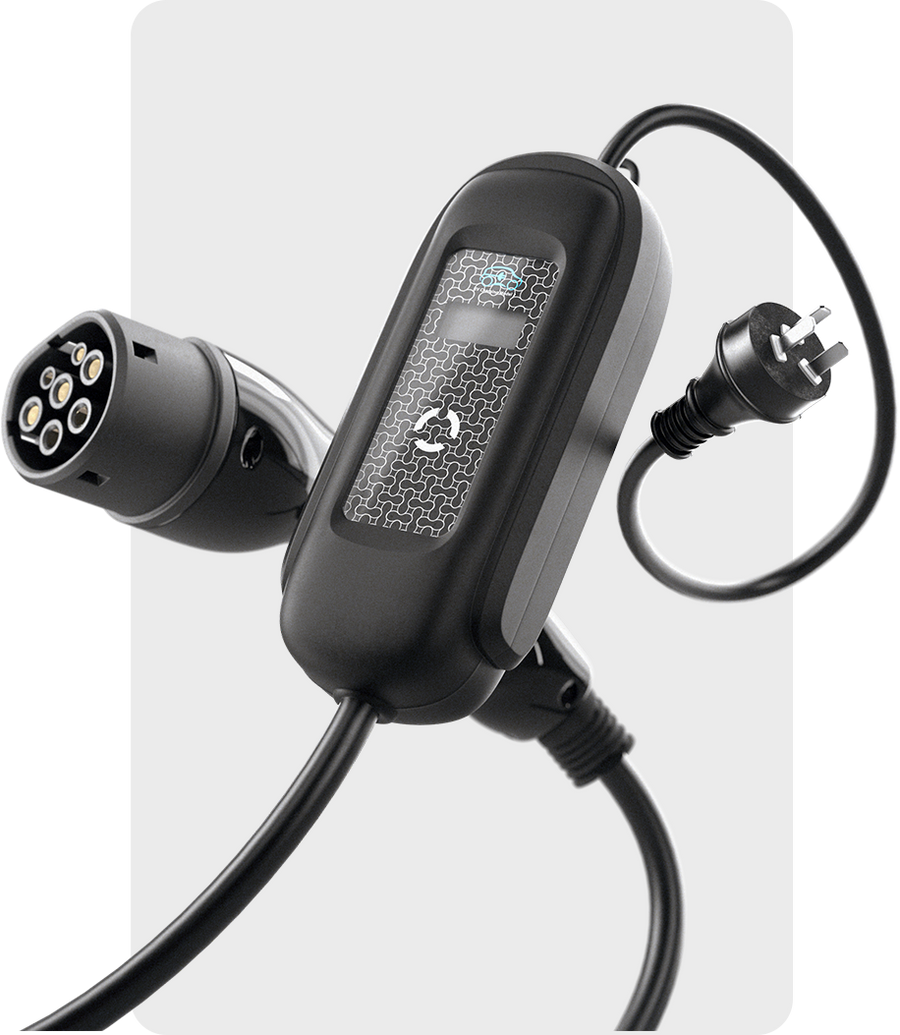We know it can be difficult to find the right EV charger cable for your vehicle with so many options.
The chargers for electric vehicles can also be different from the types of fossil fuel cars. Although the majority of EV cars sold in Australia are Type 2 EV portable charger, some are Type 1, especially from Asian manufacturers. Before you buy a cable for your car, make sure you know what type it is.
Let’s Compare Type 1 And Type 2 EV Chargers
What Is An EV Charger Type 1?
Type 1 chargers feature a 5-pin design. This type of EV charger has a single-phase design and is capable of fast charging at a voltage between 3.7kW AC to 7.4kW AC. It can provide between 20-40 Km of range every hour.
Type 1 charging cables come with a latch that secures the plug while charging. Even though the latch prevents the cable accidentally from falling out, anyone can take the charging cable out of the car.
What Is A Type 2-EV Charger?
Type 2 chargers come in a seven-pin design and are compatible with both single-phase and multi-phase mains power. The range of Type 2 cables is between 48-144 Km per charging hour. It is possible to charge domestically for up to 22kW while charging at public charging stations for up to 43kW. It is far more common to find a Type II compatible public charging station.
Type 2 charging cables have a locking mechanism that holds the plug in place when charging. It is only the owner who can remove the charging cable from their car. This makes them more secure, particularly if they are used at the public charging station.
Other Factors –
Battery Size:
The battery size determines how long it takes to charge.
Current Battery Charge Level:
It takes less time to top up with charge than charging from an empty battery.
Maximum Charge Rate:
Your vehicle’s charging time will be determined by how fast the charger charges the vehicle. Your car may be capable of charging at 22kW but it will only charge at 7kW if you charge it at a 7kW point.
The maximum charging rate for your vehicle is your battery will only be able to charge at the maximum charge rate. For example, a vehicle with a maximum charge rate of 7kW will not charge at 22kW.
Environment Warmer temperatures may slightly increase the charge times. This is especially true with rapid chargers.
If you’re thinking about purchasing an EV charging point for your home, it is worth learning more about the modifications.
We hope we’ve helped you to understand the main differences between Type 1 and Type 2, EV charging cables. If you’re ready to purchase, we have a variety of EV-charging equipment in stock, including a selection of EV charging cables from well-known manufacturers.
